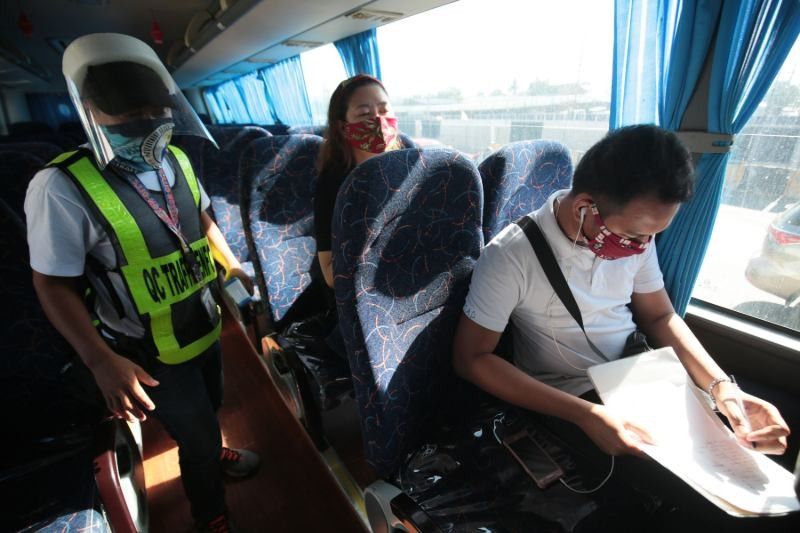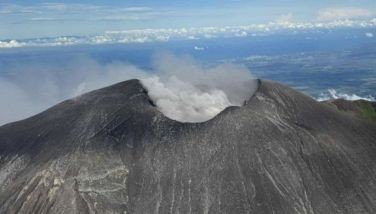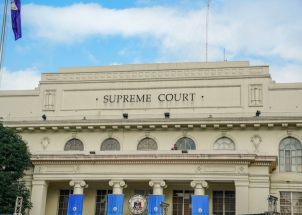Officials differ on relaxed distancing on public transport; Duterte to decide

MANILA, Philippines — Cabinet officials differed on the easing of physical distancing in public transportation, with some of them worried that the relaxing of the requirement could lead to higher coronavirus cases.
The Palace said President Rodrigo Duterte would have the final say on whether the current one-meter distancing rule will be retained.
During a meeting of the government's pandemic task force on Monday, Health Secretary Franciso Duque III said the Philippine College of Physicians has written a letter expressing concerns about the relaxed transport protocol.
Duque said the group expects new cases to rise by 686 per day if the distancing requirement is reduced to 0.75 meter from one meter.
"If you multiply that by 30 days, you will have about 20,580 cases. That's the new cases. If you multiply that by 1.6, which is our case fatality rate, meaning the number of deaths over the number of total infections, there would be 3,951 deaths per year," the health chief said.
Duque said he would discuss the findings of the health professionals' group during the next meeting of the Inter-Agency Task Force for the Management of Emerging Infectious Diseases.
"So whatever decision is made, at least it's clear that there is such study or modelling. I think others will also cite studies showing that the projection won't be that serious," he added.
Duterte: Consider physics
Presidential spokesman Harry Roque said while doctors are claiming that the easing of the distancing requirement would be risky, there are also studies by the transport sector that the wearing of face shields and masks would mitigate the risks.
Duterte cited the need to take into account "physics" when discussing the matter. He said a face shield may not totally protect its user from the virus in every setting.
"We are talking of direct transmission, there is a continuous and no gaps, it can hit the shield. But if you are riding in a bus that is airconditioned or open, the shield would only protect you from a direct hit. But when someone coughs...because the wind will guide the...virus...But somehow, that face (shield) , I think it’s a fallacy to say it will protect you in every environment," the president said.
"It could be the aircon coming from the second seat because of the wind...That cannot be stopped by a shield. Maybe, a mask will," he added.
According to the World Health Organization, face masks should be used "as part of a comprehensive strategy of measures to suppress transmission and save lives."
Aside from wearing face masks, the WHO advises maintaining physical distance of at least one meter, frequent handwashing, and avoiding touching the mask and one's face.
The WHO says that medical-grade face masks are required for health workers, those taking care of possible COVID-19 cases at home or at an isolation facility, and those who are more susceptible to the disease like the elderly.
"For areas of widespread transmission, with limited capacity for implementing control measures and especially in settings where physical distancing of at least one meter is not possible — such as on public transport, in shops or in other confined or crowded environments — WHO advises governments to encourage the general public to use non-medical fabric masks," it also says.
Face shields are now required on public transportation and in workplaces aside from the face masks that have been required for months.
"At this time, it is not known what level of protection a face shield provides to people nearby from the spray of respiratory droplets from the wearer. There is currently not enough evidence to support the effectiveness of face shields for source control," the US CDC says, which notes that their primary use is for eye protection.
Risk mitigation
National task force against COVID-19 chief Carlito Galvez, Jr. said risks can be mitigated even if the distancing requirement is reduced.
"I believe it is a matter of risk management...One of those is proper ventilation, the air should circulate...We talked about this and before we allow transportation mode, they conduct a mitigation process," he said.
"It includes avoiding crowding, at the same time the most important is to observe three Cs: avoid crowding, close contact, and confined spaces," he added.
Galvez said the relaxed protocol can be implemented but the wearing of face masks and face shields should be enforced. Commuters should also be barred from talking and using their mobile phones.
"Other countries are evolving. We may soon become the only country that is very stringent on one meter," Galvez said, citing the case of Japan, which he said has eased the distancing requirement.
"The most vulnerable really is the hospital, not transport. The most vulnerable is the home and community because we remove our masks there. When we are eating, when we are talking with our friends, when we are talking with our co-workers.The most vulnerable really is the workplace, canteen. smoking places," he added.
Galvez also argued that the accessibility of transportation is necessary for economic recovery.
"Without transportation, we cannot recover, Mr. President," he said.
"Too much risk aversion is not good."
Galvez said issues about distancing in transportation would become "immaterial" if people infected with the coronavirus are isolated.
"If we isolate the positive, our (public) transport would be safe,"
Año prefers one-meter distance
Interior Secretary Eduardo Año, who had tested positive for COVID-19 twice, expressed reservation over the eased distancing protocol in transport, saying the government would have more problems if the number of cases increase.
"The use of a face shield and face mask can only mitigate risks but the most important really is distance. The proposal to reduce it to 0.75 meters and then reduce it further to 0.50 and to 0.3 is risky," Año said.
"I agree with health workers, health sector that it could result in a spike and it would end up like a roller coaster and we might go back to where we started. We might have to impose ECQ (enhanced community quarantine) again so we hope this can be studied thoroughly," he added.
Año cited the need to be consistent in implementing measures, noting that distancing is required in offices and malls.
"I side with Secretary Duque because we are cautious. We might regret our decision if many people get infected for violating the one-meter distancing," the interior chief added.
Roque said Duterte would have the final say on the relaxed distancing protocol.
"There will be a resolution on that. If there is none, the president will decide," he said at a press briefing Monday.
- Latest
- Trending

































